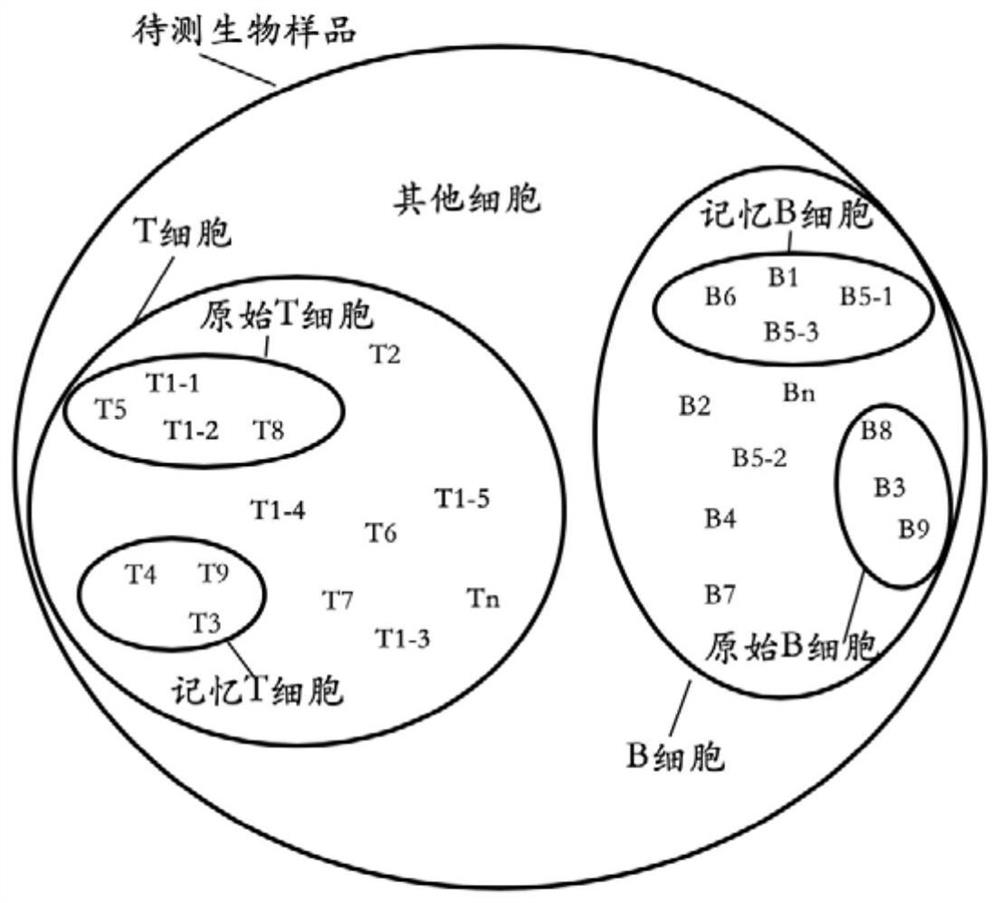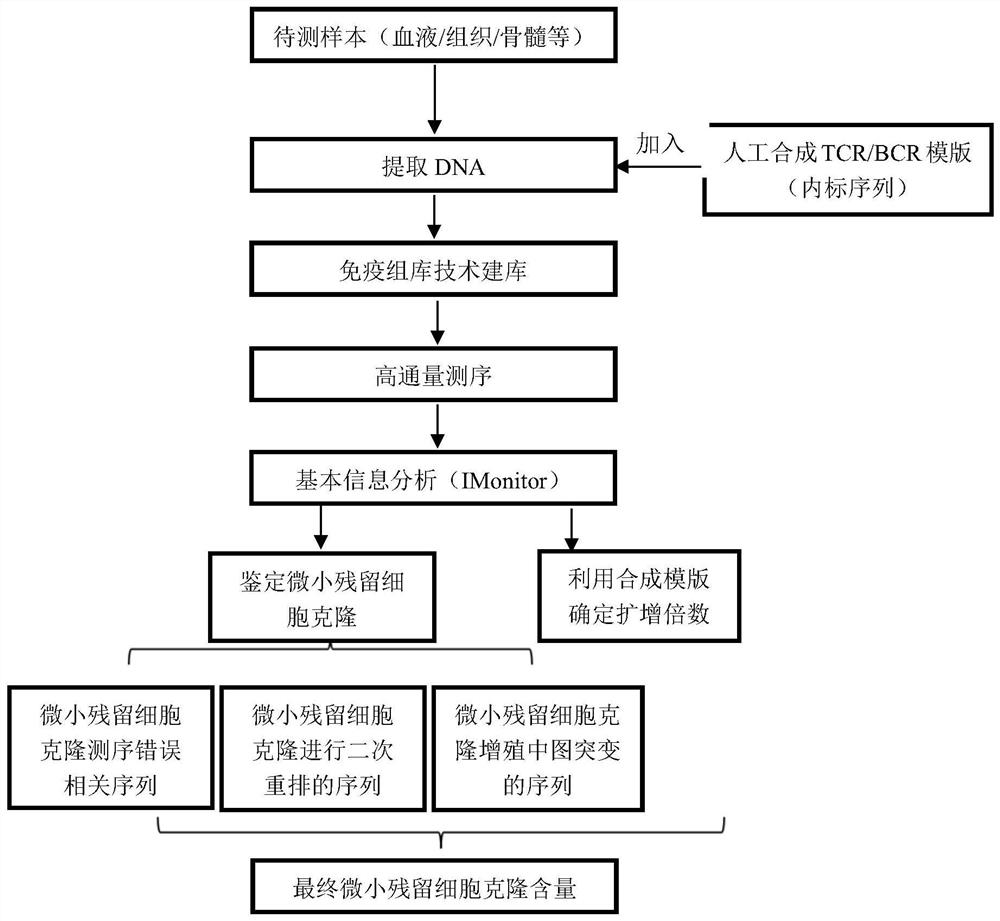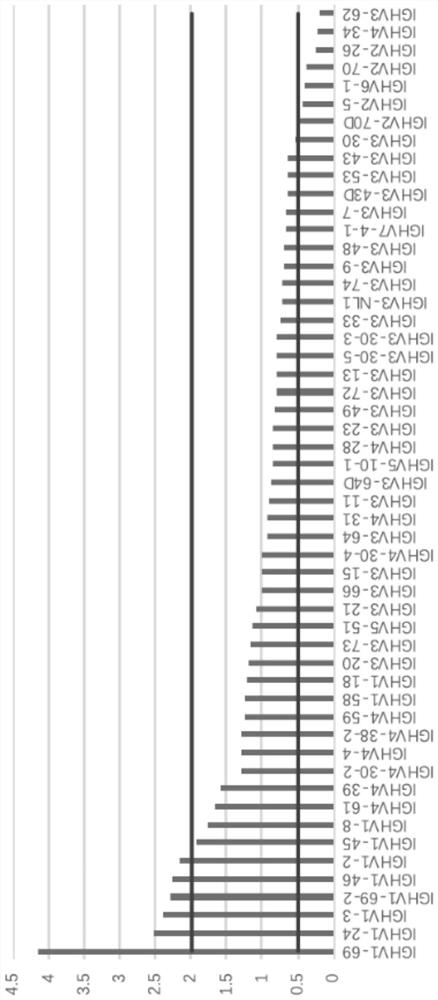Specific lymphocyte content analysis method and device based on TCR/BCR high-throughput sequencing
A lymphocyte and analysis method technology, applied in the field of gene detection, can solve the problems of detection, high cost, and affecting the accuracy of cancer cells, etc., to achieve accurate reflection and good detection performance
- Summary
- Abstract
- Description
- Claims
- Application Information
AI Technical Summary
Problems solved by technology
Method used
Image
Examples
Embodiment 1
[0053] Lymphohematopoietic tumor is a malignant disease that seriously endangers human health caused by malignant clonal proliferation of lymphocytes, including lymphocytic leukemia, myeloma and various lymphomas.
[0054] With the improvement of diagnosis and treatment technology, the diagnosis and treatment of lymphocytic tumors has achieved a qualitative leap. Minimal residual disease (MRD, Minimal residual disease) refers to a small amount of tumor cells remaining in the body after complete remission (CR, Complete Remission) after induction chemotherapy or after bone marrow transplantation. With the continuous improvement of chemotherapy, specific targeted therapy, and hematopoietic stem cell transplantation technology, the treatment effect of lymphocytic tumors is improving day by day. However, recurrence is still a problem that plagues the cure of this type of disease, and minimal residual disease is the main source of recurrence. Regular MRD detection for patients has i...
Embodiment 2
[0131] A specific lymphocyte content analysis kit based on TCR / BCR high-throughput sequencing, including: internal standard sequence, multiple PCR amplification primers and reagent components required for conventional high-throughput sequencing.
[0132] The internal standard sequence is the internal standard sequence of the coding gene of artificially synthesized TCR / BCR; the multiple PCR amplification primers are used for the amplification of the TCR / BCR gene, and the specific sequence is as SEQ ID NO.1-SEQ ID in Example 1 Shown in NO.56.
Embodiment 3
[0134] A specific lymphocyte content analysis device based on TCR / BCR high-throughput sequencing, including a high-throughput sequencing module and a data analysis module. Wherein, the high-throughput sequencing module uses the kit in Example 2, and is performed according to the high-throughput sequencing steps in Example 1; the data analysis module is performed according to the data analysis steps in Example 1.
PUM
 Login to View More
Login to View More Abstract
Description
Claims
Application Information
 Login to View More
Login to View More - R&D
- Intellectual Property
- Life Sciences
- Materials
- Tech Scout
- Unparalleled Data Quality
- Higher Quality Content
- 60% Fewer Hallucinations
Browse by: Latest US Patents, China's latest patents, Technical Efficacy Thesaurus, Application Domain, Technology Topic, Popular Technical Reports.
© 2025 PatSnap. All rights reserved.Legal|Privacy policy|Modern Slavery Act Transparency Statement|Sitemap|About US| Contact US: help@patsnap.com



